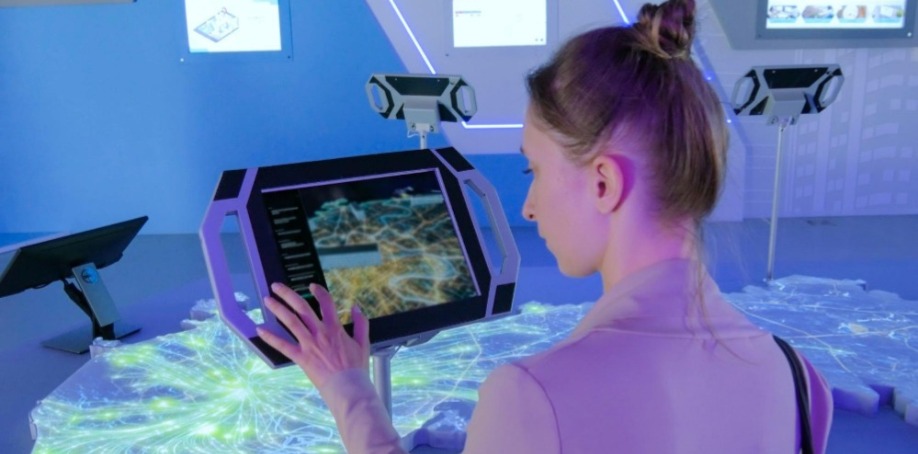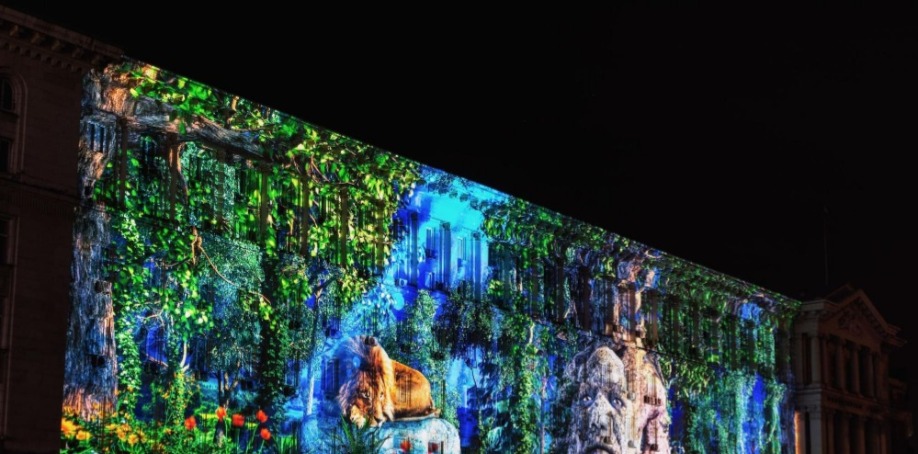
As an innovative and fast-growing technology, projection mapping should be on every technical director’s radar. However, new technology always comes with new terminology and definitions to know. Understanding the context and meaning of important words can ensure technical directors are keeping pace.
To help you understand and sell projection mapping properly, we’ve put together five common terms you’ll need to know.
Augmented Reality
Augmented reality is a phrase that often arises when pitching projection mapping. Still, most people only have a vague idea of what it means.
Cantina Chief Innovation Officer George White offers a helpful definition. “Augmented Reality is the application of machine technology to overlay digital information and interactions on the physical world.”
Augmented reality has become an umbrella term, including a variety of technologies such as projection mapping, says Zugara.
Projection mapping is a form of augmented reality, and while not the only kind, it is a very popular one for events and conferences. This is because it is a versatile technology that applies to many different needs and audiences. For example, Chiradeep BasuMallick at Ziff Davis B2B suggests that kiosk-based applications can offer end-to-end augmented reality experiences that drive marketing initiatives.
Gamification, gesture-recognition and skeletal tracking are additional technologies often associated with augmented reality. These tools can be used in marketing and sales initiatives across nearly every industry.
Projection Masking
When reading about how other companies have implemented successful projection mapping projects, you may have come across the term masking.
Andrew McWilliams notes that sometimes, people use projection mapping and masking interchangeably. However, masking is actually a separate technology that supports projection mapping to ensure standout experiences.
There are a few different ways to support projection mapping through masking. Techniques vary across mapping software tools and can be created in many different programs, including After Effects, Skynoise notes.
“Masking can be simulated by placing black images above the video layers, and positioning and scaling to fit.”
To understand how masking looks in real life, consider a recent project explained by creative technologist Pushan Panda. He says that the mask was set as a background image, and the Cinema 4D camera was placed so that it matched the projector’s position.
Then, through educated guesses, the Cinema 4D camera was moved and rotated until the 3D scene matched the digital scene. While this can be a tricky step, it is an essential one that ensures the overall success of your event.
This is a concept you should be very familiar with when pitching a projection mapping project, and it should also be factored into the overall budget.

XYZ Orientation
Orientation is key when it comes to designing and implementing a successful projection mapping installation. That's why you'll see many industry articles and experts referring to XYZ orientation in reference to projection mapping.
Mozilla defines XYZ orientation as: “The Earth coordinate frame is the coordinate frame fixed on the center of the Earth; that is, the axes are aligned based on the pull of gravity and the standard magnetic north orientation. We use upper-case letters ('X', 'Y', and 'Z') to describe the axes of the Earth coordinate frame.”
Why is this so important to a successful projection mapping installation? Coordinates need to be defined so that the object can be successfully placed in relation to the projector. Moreover, the projector's XYZ orientation, position and lens specification add to the virtual scene, says Light Sound Journal.
Moreover, some applications define the Y and Z access in different ways. The California Polytechnic Institute states that "X is the axis that goes side to side, Y is up to down and Z is forward to backward (in some other 3-D applications, Y and Z are flipped).”
Make sure you know which way X and Z are defined on the application you're using, and see whether or not the potential client has an orientation preference.
XYZ orientation is just one part of coordinating and positioning a projection mapping image, but it shouldn't be overlooked.
Video Jockey
The term video jockey, or VJ, isn't anything new. In projection mapping, VJs pair visual media with music to transform environments such as clubs, concerts, churches and conferences. It's important to understand that the role of a VJ is far more complex than just playing music.
“It's more than simply setting up a presentation for a concert set and pushing the play button. VJ'ing takes the basic structure of motion graphics, pixel mapping, and creates unique mash ups of media,” says Triple Wide Media.
Many VJ artists work with projection mapping to create immersive experiences for guests and large crowds. There are a number of software technologies which VJ artists use to create these events. A few are mentioned on a list from Luke McElroy, which take projection mapping into account. These tools include ProVideoPlayer 2, which is designed to make projection mapping design easier.
One such video jockey who creates with projection mapping is Ben Cantil, known on stage as Zebbler. This visual artist and video jockey works with music to create visual experiences. “It's not an easy task to create a matching visual experience that can be even crazier than what people see when they close their eyes,” says Molly Ebner at Producer Dojo.
She praises Zebbler's Shpongletron for doing just this. His infamous Shpongle Mask had six laser eyes and rotating cubes, but was later updated to include pixel-mapped LEDs and infinity boxes embedded within projection mapped tentacles.
The excitement that video jockeys can create using projection mapping technology is not something to be understated. It's incredibly helpful to look at how these artists work, and apply that creativity to your own pitch. Then, you can show how your technology can be used to create successful and captivating presentations.

Lumens
Projectors are the most essential tool when creating a projection mapping event. Even the most stunning concept will look amateurish with the wrong equipment. That's why it's so important to understand how lumens matter when choosing a projector.
“Luminosity describes the amount of light a video projector puts out. It is measured in lumens. A high number of lumens means a projector is more powerful,” says software provider HeavyM.
High lumens were once reserved only for certain events, but this is no longer the case according to Epson. “Once available for only big-budget productions, recent advances in projector technology deliver affordable, bright, high-quality, high-lumens projection that is within the reach of virtually any venue owner or manager.”
Understanding what lumens are is essential to pitching projection mapping. Still, there's a more important question to ask: How many lumens do you need for a projection mapping projector?
Digital Pressworks recommends using projectors that produce about 2,500 lumens or more. While they note that 1,500 lumens might be acceptable if the surrounding area is very dark, anything lower isn't suitable for a professional experience.
Coming to a pitch already understanding these concepts will help you explain them to your client, and show them that you're the best person for the job.
Images by: Aleksey Popov/©123RF.com, Donka Zheleva/©123RF.com, Mark Bowden/©123RF.com


